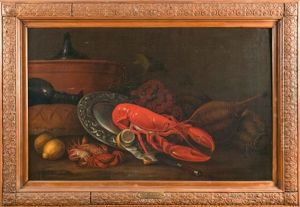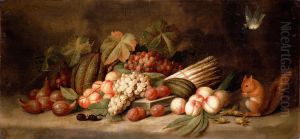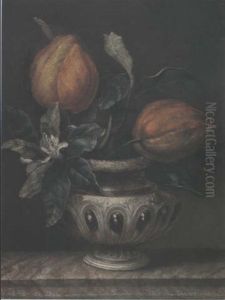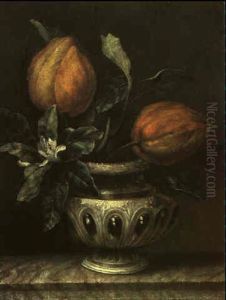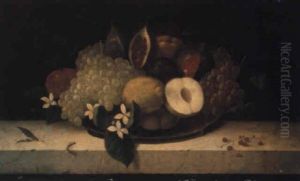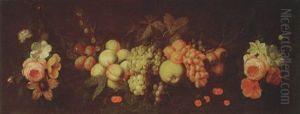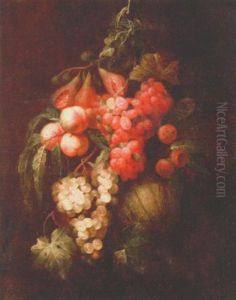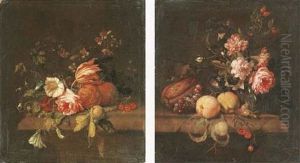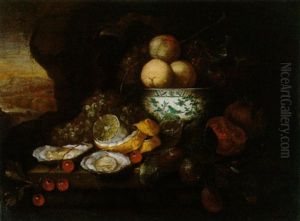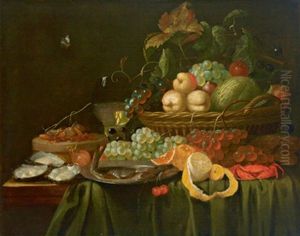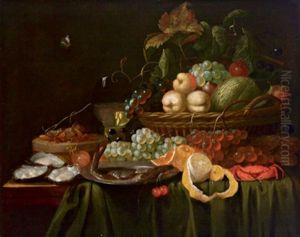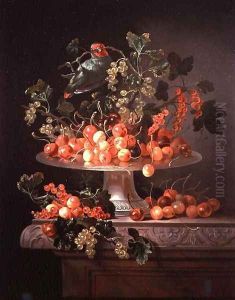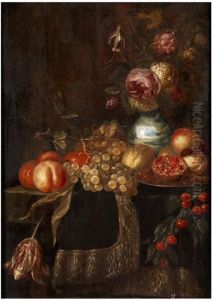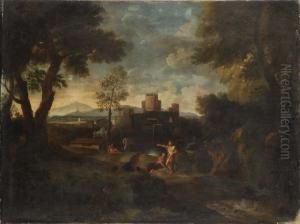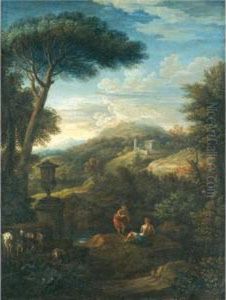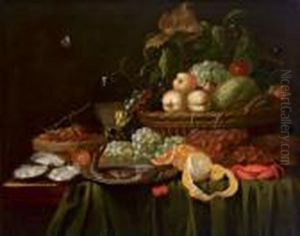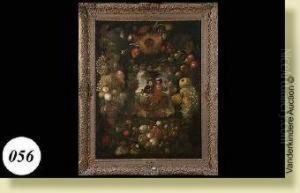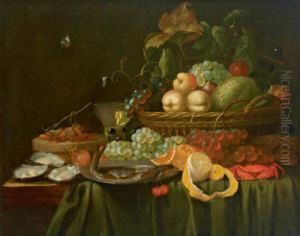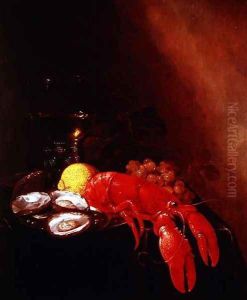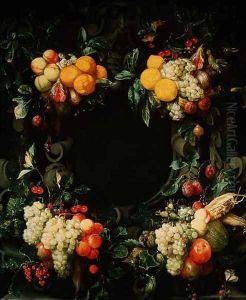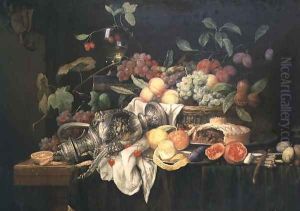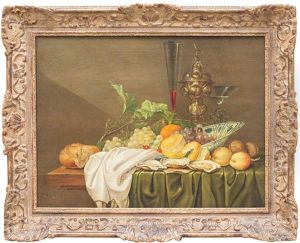Jan Frans van Son Paintings
Jan Frans van Son was a Flemish Baroque painter who is known for his still-life works, particularly those featuring flowers and fruits. He was born in Antwerp in 1625 into a family of artists; his father, Janssens van Ceulen, was a painter, and it is likely that he received his initial training at home. Van Son was a member of the Guild of Saint Luke in Antwerp, which was the city's association of painters, sculptors, and other artists, and he became a master there in 1645.
His style was greatly influenced by Jan Davidsz. de Heem, one of the most famous still-life painters of the time. Van Son was known for his precise and detailed representation of objects, often combining fruits, flowers, and objects on ledges or stone niches, with a strong sense of texture and color. His paintings often conveyed a sense of abundance and the beauty of nature, and he was skilled in depicting the various surfaces and textures of the elements within his compositions.
During his career, van Son traveled and worked in different cities. After establishing his reputation in Antwerp, he moved to England around 1664 and stayed there for a few years. His works were well-received in England, and he painted for an elite clientele. However, little documentation exists about his time in England, making it challenging for historians to track his activities there with precision.
After his return to the continent, van Son continued to work and had influence through his paintings. He died in Antwerp in 1704. Although he is not as well-known today as some of his contemporaries, his work still offers valuable insight into the still-life genre of the Flemish Baroque period. His legacy is preserved in the collections of various museums and art galleries around the world, where his paintings continue to be admired for their beauty and technical skill.
